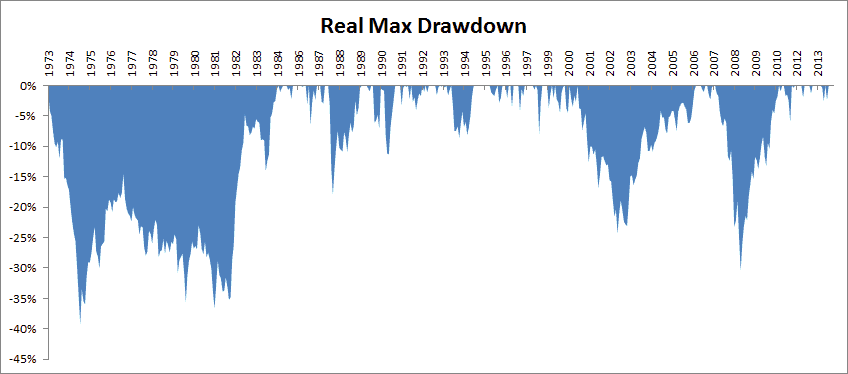I’ve been writing this white paper/book on asset allocation strategies which has been really insightful and fun. Actually I’ve been mostly putting off writing it but here’s to hoping that I get it done by year end.
One of the biggest challenges of investing is long periods of underperformance, or outright negative performance and losses. Cliff Asness has a fun piece out on his blog where he talks about 5 year periods in stocks, bonds, and commodities and basically how anything can happen.
Unfortunately for investors there are only two states – all-time highs in your portfolio and drawdowns. Drawdowns for those unfamiliar are simply the peak to trough loss you are experiencing in an investment. So if you bought a stock at 100, and it declines to 75 you are in a 25% drawdown. If it then rises to 110 your drawdown is then 0 (all time high).
One challenge for investors is how much time they spend in drawdowns. It is emotionally challenging largely since they anchor to the high value in their portfolio. If your account hit $100,000 last month up from $20k ten years ago, likely you think of your wealth in terms of the recent value and not the original $20k. If it then declines to $80k, many think in terms of losing $20k rather than the long term gain.
I thought it would be interesting to look at a few asset classes and ask how long they spend in each outcome – either all-time highs or in a drawdown. Below is a chart of a basic 60/40 portfolio’s drawdown since 1972, REAL RETURNS. Notice how brutal the high inflation 1970s were to the portfolio:
The investor only spends about 22% of the time at new highs, and the other 78% in some form of drawdown. A few values for common asset classes below….
US Stocks 17%
Foreign Stocks 12%
Bonds 16%
REITs 16%
Commodities 9%
Gold 4%
60/40 22%
So if you’re going to be an investor, get used to being a loser!


